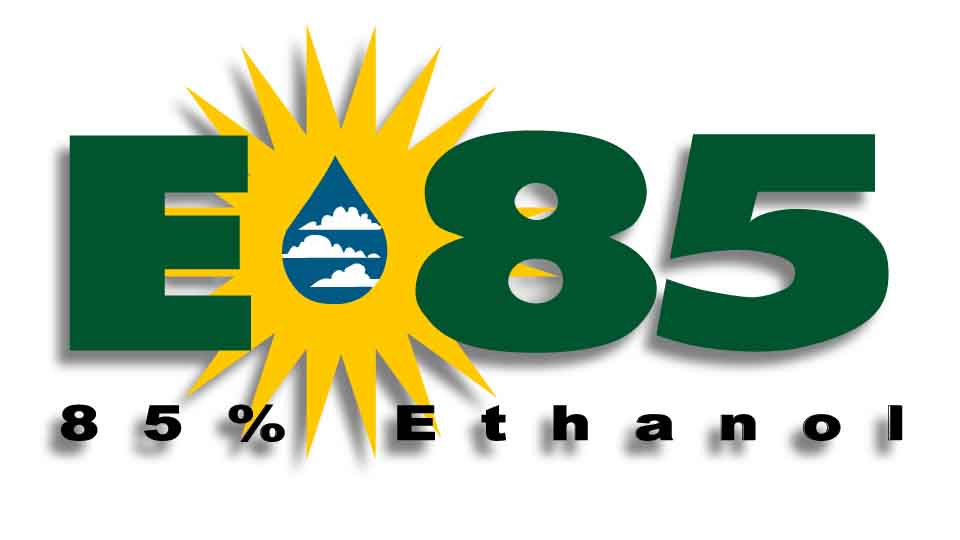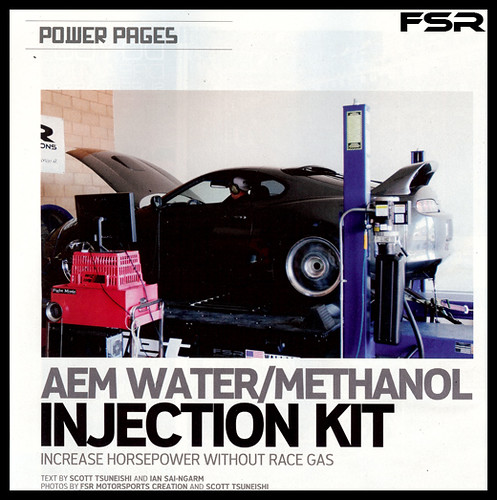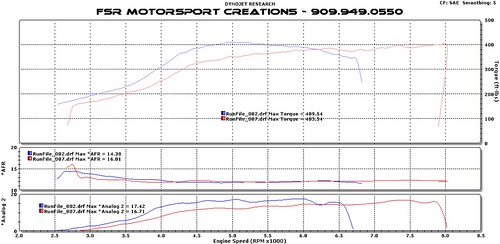Tuning By FSR
AEM Series 2 Update - Flex
Created on Wednesday, 01 May 2013 17:18{youtube}h38jB0hSInw{/youtube}
AEM has come out with a really comprehensive update for their Series 2 EMS. It allows us to run a variety of new features:
- Flex Fuel: Flex fuel and ignition maps, flex o2 fb map, flex boost target tables, starting tables, accel tables, warm up tables. This will also utilize a standard GM fuel composition sensor and has Freq. based input meaning it does not require any converter boxes or 0-5v signal generators. Wire the flex fuel sender directly to your series 2!
- Lean Protection: Load and RPM based lean protection for use with your wideband input. It also has a configurable output signal.
- Fuel Pressure Protection: The series 2 can now look at fuel pressure as an input and shut down the engine if fuel pressure isn't maintained within a configurable window.
- Oil Pressure Protection: There is a user configurable oil pressure limit table which establishes the minimum allowable oil pressure based on engine speed.
- Coolant Temp Protection: Configurable maximum engine RPM based on coolant temperature to prevent engine damage on a cold or hot motor.
- Knock Control: Individual cylinder based knock windowing and knock control. If a single cylinder detects knock, ignition and fuel trims are applied directly and only to the offending cylinder. This is cruicial for pump gas street cars running boost! Modern forced induction motors are making 400-700 horsepower with small engines due to the advancements in knock control at WOT, and this is a step in the right direction.
- Spare temp/pressure inputs: We use these inputs for oil temperature, pre-intercooler IAT, among other helpful channels for your race car utilizing the onboard logging.
- 3 step rev limiter: VSS and gear based 3 step rev limiting to help traction limited cars.
- Boost target trim: User selectable analog input for boost target trim INCLUDING RPM based boost targets which will allow us to trickle in additional boost at high RPM for traction limited cars, or engines where too much torque can lift the head or hurt the rods in the midrange. This also helps for octane limited cars where we reach the knock threshold in the midrange but can add more power in up top.
Pickup your Series 2 EMS. Call us for unbeatable deals! 909.949.0550
Cobb Protuner... And More
Created on Sunday, 28 April 2013 04:35{youtube}p8vURjPGqU4{/youtube}
While we don't advertise ourselves as a major Subaru tuning shop... ..we sure tune a lot of Subaru's! We're usually doing several a week and most are quick in and out jobs. We are experienced AccessPort ProTuners for Subaru, BMW, Mitsubishi, Mazda, etc... in addition to more advanced options from AEM, Link ECU, and Vipec. We're comfortable with pump, meth, E85, racegas, and mostly any mix and match in between.
Pickup your Cobb Accessport in our online store
FSR AEM Meth Injection Install and Dyno Tune
Created on Monday, 01 April 2013 23:09Import Tuner recently published an informative article on a Meth Injection install and tune we did on one of our client's Supras.
E85 and what you need to know about flex fuel
Created on Wednesday, 09 January 2013 18:01

Over the last several years, we've been tuning more and more E85 powered cars for both the street and race track. E85 has a number of benefits and we are going to review them, as well as compare them to pump gas, conventional race gas, and methanol injection.
The first thing you need to know about E85 is it makes tremendous power. Without getting into the chemistry of it all, here are the basics: It runs cooler than regular pump gas or race gas. It burns cleaner and you get less soot out of your tail pipe. It cools down the air charge (air going into your cylinder) because of its evaporative properties and the fact that about 30% more fuel is injected to maintain the same air fuel as with gasoline. That extra volume also make turbocharged cars build their torque and spool quicker; often about 500RPM quicker! Lastly, and most importantly, people argue about the effective octane of E85, but the answer is right there on the dyno sheet. E85 makes very similar power to C16 or 117octane fuels safely!
Dyno Tuning Part 2: Pump Gas Horsepower
Created on Thursday, 01 November 2012 20:54Subject Comparison: 67mm CEA, 91 octane, stock intake/cams/3" exhaust vs built big intake/cams/4"
Two similar setups with some key changes show big differences in power. Here we have two 3.0's which are setup with the same fueling, compressors, octane, and similar tunes with very different results. If you are someone who wants to make power on very low octane fuel, pay close attention.
More Articles...



